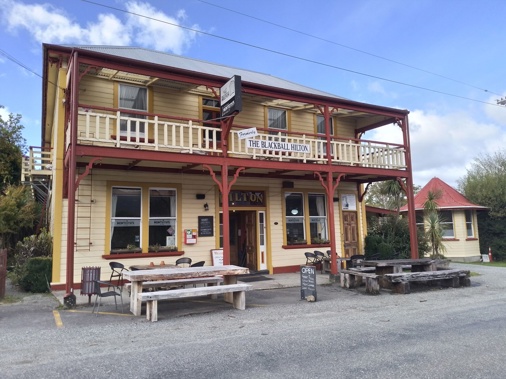
Amid the treasury of winning attractions across the West Coast, sampling its spoil of historic pubs, steeped in character and heritage is an irrepressible draw. They are keepers of the past and bridges to the present, proudly speaking to our pioneering history, of heady gold and coal rushes, and trail-blazing development. A starring specimen is Formerly The Blackball Hilton, located at the foot of the Paparoa ranges, just 29km from Greymouth. 114 years old this year, Formerly the Blackball Hilton has a rich and fascinating history, in the town that gave birth to the Labour Party. Blackball began life as a small gold settlement in 1865, but it was the development of the coalfield thirty years later that powered the town’s development.
The 'old school' style pub lustily sports its history on its walls, while the hotel’s rustic architectural character has been faithfully maintained. During the Covid era, it added a fresh page to Blackball history, heralding the town’s first ever drive-through top open, with takeaway pub meals proving a smash-hit. Blackball’s raffish charm is infectious. As I popped into the general store, I noticed a sign on the front door. “We don’t have a town drunk in Blackball, so we all take turns instead.” Across the road on Hilton St, I stocked up on some artisan delights from the Blackball Salami Company. This plucky gourmet butchery has been operating over 30 years, now boasting a range of over forty different products, including haggis, black pudding and cheese kransky. Their wonderful salami is made the old-fashioned way, by natural curing and manuka wood smoking the beef, pork and venison.
From Blackball, it’s a short drive to one of the most powerful heritage sites on the West, the Brunner Mine Memorial Site. In a region wrenched by many a mining disaster, this magnificently preserved site is a memorial to New Zealand’s worst mining disaster of all. Strung along the slopes of a deep gorge carved out by the Grey River, Thomas Brunner not only named the river, but the mine bears the name of this intrepid overland explorer, who discovered the vast black coal seam in 1847. Straddling both sides of the river, and crowned with a dramatic suspension bridge, every twist of the pathways around the 2km-long loop walk leads you to vestiges of the old mine.
A sulphurous smell still lurks near an entrance to the old underground mine; you’ll come across beehive-shaped ovens that once turned coal into coke; you’ll notice how the site was also a powerhouse for brickmaking; you’ll gaze in awe at the enormous Tyneside chimney; and there’s plenty of old machinery to fire up the imagination. Most poignantly, the life-sized statue of the coalminer that adorns the Brunner Memorial. It is here that 65 men died one fine March morning in 1896 when New Zealand’s largest coal mine exploded around them. What really tugged at my heart while exploring the site is the story of the pit ponies who were used to pull coal wagons in and out of the mine.
On the morning of the disaster, mine crews tried three times to coax the horses into the mine. They fiercely resisted and only relented after being blindfolded and led into the mine backwards. Shortly afterwards, the explosion killed everyone in the mine, including the ponies. Did they sense imminent danger? Brunner Mine remains the site of New Zealand’s worst workplace accident – but it was not a one-off. Memorial after memorial to West Coast mining disasters cluster on this site, including the names of the 29 men killed in the Pike River disaster, just down the road.
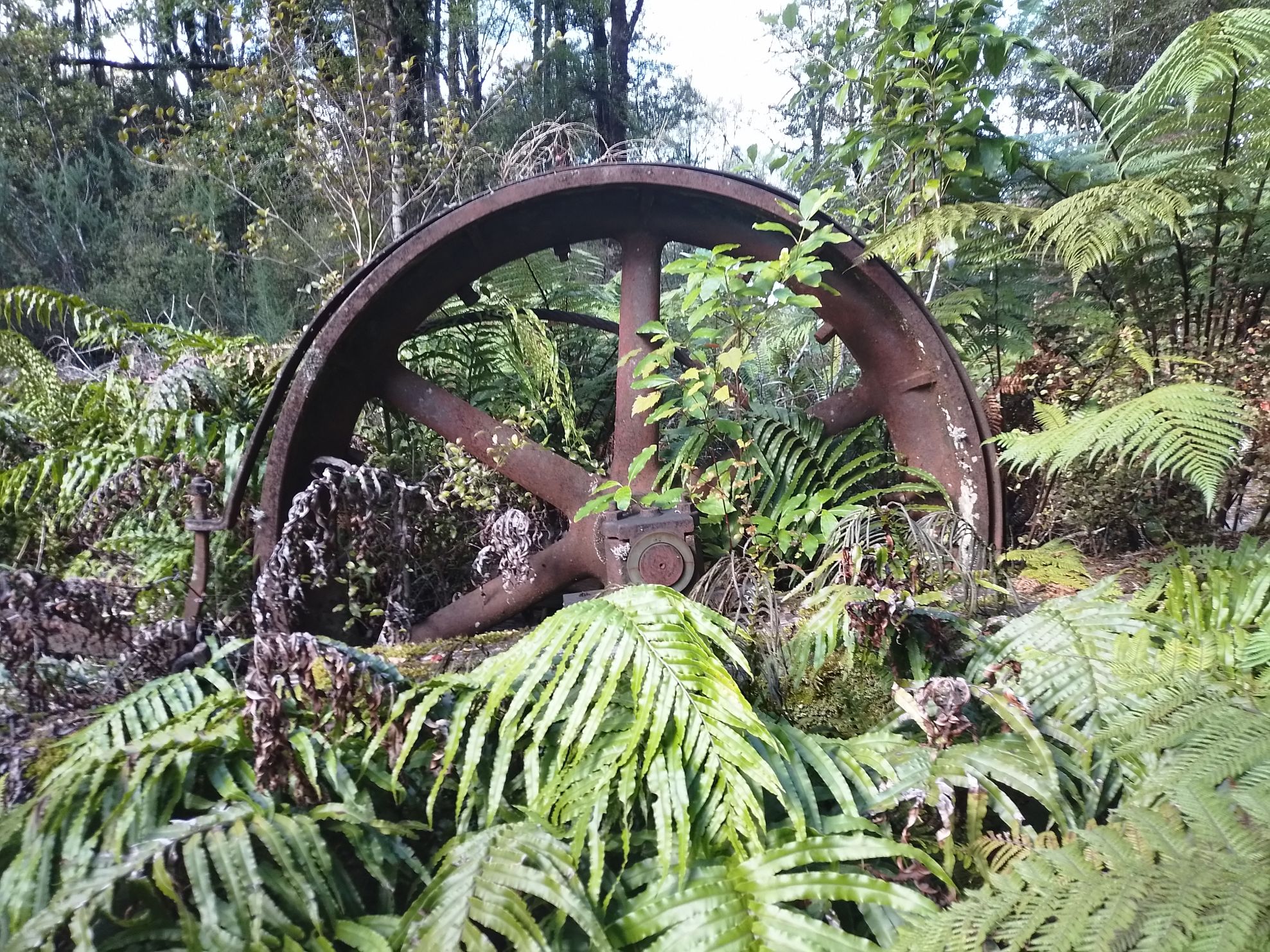 Vestiges of the goldmining era at Te Aka Treehouse. Photo / Mike Yardley
Vestiges of the goldmining era at Te Aka Treehouse. Photo / Mike Yardley
After absorbing that powder-keg of tragedy and history, I ventured onto the other side of the Grey River for the short drive to Nelson Creek, an area wreathed in gold-mining history, reaching back to 1865. Its fortunes have risen and fallen over the years; some areas were rich in gold, but historically findings were patchy. At the height of the gold rush over 1200 miners were scattered throughout the area and sites like “Try Again Terrace.” Today one of the novel attractions at Nelson Creek Recreation Reserve is the opportunity to follow in the footsteps of the early gold miners and fossick for gold in the designated areas. (No licence is required). There are some short and sweet walks to savour, like Callaghans Track, Tailrace Walk and Colls Dam Walk.
Nelson Creek is also home to one of New Zealand’s newest off-grid accommodation offerings, enrobed in spectacular native forest and encompassing a treasure trove of hidden wonders. I had the pleasure of bedding down at Te Aka Treehouse Native Forest Retreat, a wondrous passion project of Dave and Lisa North, who along with their children Amelia and Tom, plus Muddle the delightful labrador/spaniel cross, will make you feel so welcome, with their hearty, homely hospitality. ‘Te Aka’ is the Māori word for vines, embodied by the native rātā vines that scale the tree trunks. Dave and Lisa named the forest Te Aka, to symbolise their commitment to being faithful stewards of the land and the intertwining of nature and humanity. Growing, hunting, gathering, conserving and adventuring is steeped in the North family’s DNA.
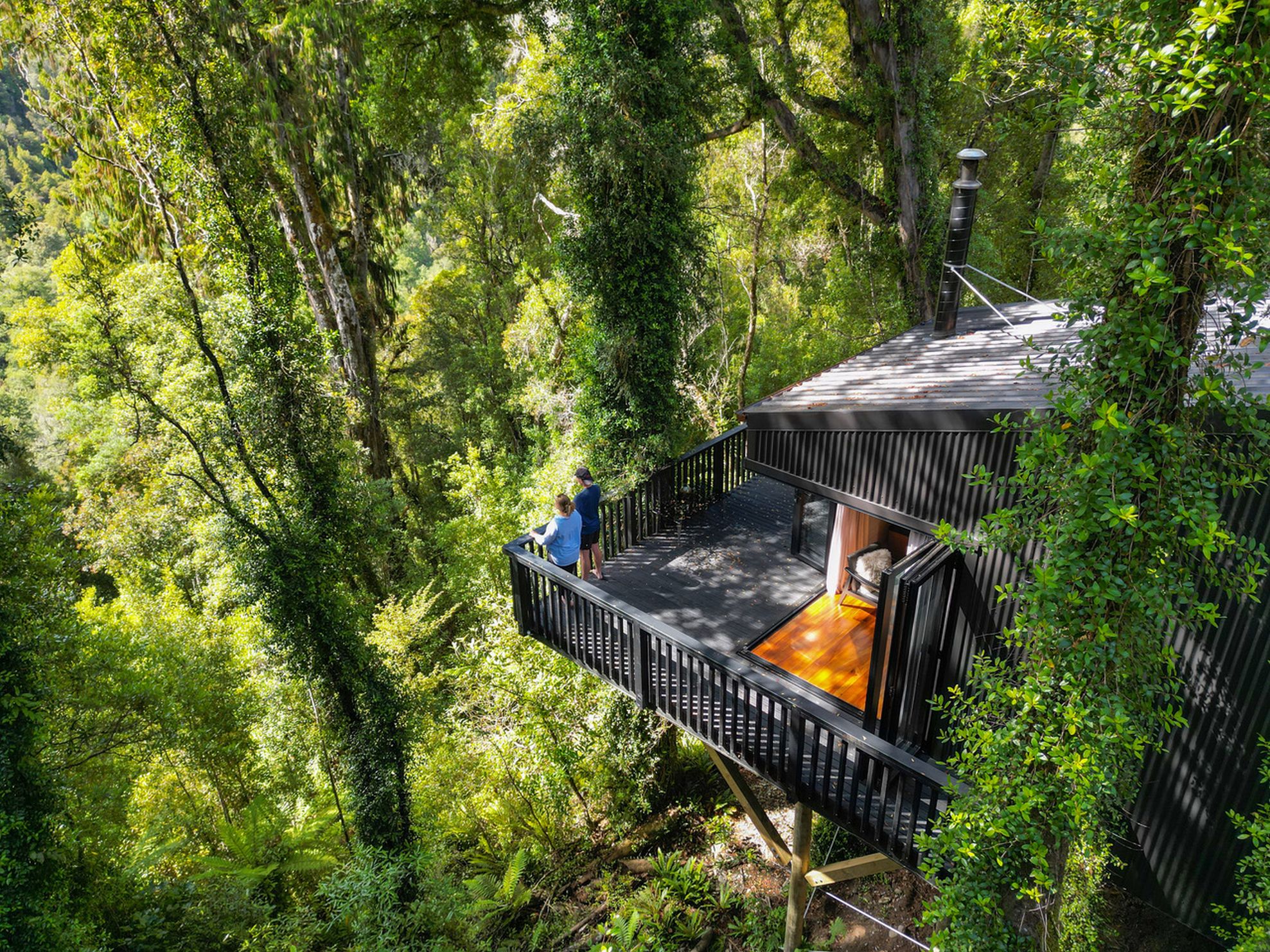 Te Aka Treehouse exterior. Photo / Supplied.
Te Aka Treehouse exterior. Photo / Supplied.
They walk the talk on the principles of Kaitiakitanga (guardianship and conservation), with a deep commitment to nurturing the land and transforming it into an intergenerational home with a fresh, unfolding story. Their homestead straddles a high plateau, above Nelson Creek, and their unique 23-hectare property is a ravishing blend of virgin, old-growth podocarp forest and regenerating woodlands. Tucked away on the side of the plateau, facing straight out to temperate rainforest, the treehouse has been ingeniously constructed around spectacular specimens of mataī, Southern rātā and rimu.
As I soon discovered, Dave is like a super handy man who can turn his hand to any task, with passion, aplomb and resolve. His background is in crafting skateboards, but the craftsmanship entailed in the treehouse construction is seriously next level! Everything was carried in piece by piece and by hand, for the treehouse construction. All the timber sourced for the accommodation was processed within 10km from their property. Eco-friendly practices are ever-present, from the collection of fresh rainwater which is UV treated to the vermiculture-based septic system with tiger worms – which is still a full flush toilet. Everything is powered by solar energy or a back-up generator. Fear not – you don’t have to go off-grid too, when it comes to digital TV or staying connected. The Starlink Wi-Fi keeps you fully plugged in, if that’s how you roll. But nature’s theatre overshadows the titillations of technology. With elevated views of these majestic podocarp species in the treehouse, you literally feel like you’ve entered another realm of enchantment – at one with the noble forest.
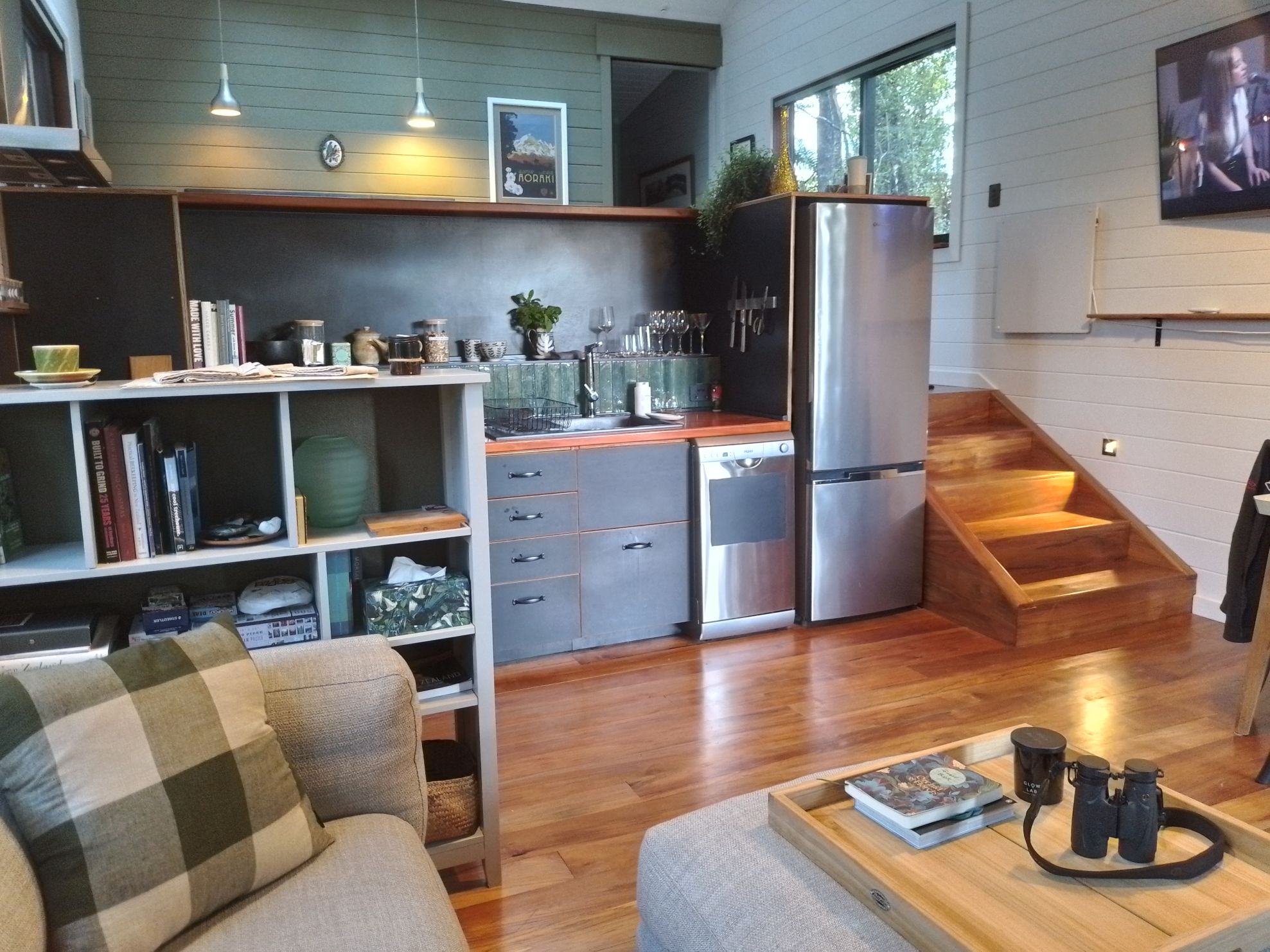 Te Aka Treehouse interior. Photo / Mike Yardley
Te Aka Treehouse interior. Photo / Mike Yardley
There are actually two treehouses, with the main house spaciously designed with a full kitchen, lounge and sleeping area, consisting of a cloud-comfortable queen bed and single loft bed. The neighbouring house can accommodate two fellow travellers, so they can accommodate five guests in total. This is five-star living in forest finery. The main treehouse has an ensuite bathroom with a deep relaxing bath. As you’d expect from this eco-conscious property, all the soaps and shampoos are natural and locally sourced. The fully equipped kitchen brims with so many thoughtful touches, stocked with basic pantry items, ensuring you have the essentials at your fingertips. Lisa implores you to help yourself to the joy of picking fresh produce from their bountiful organic vegetable garden and freshly laid eggs from their free-range hens.
Both accommodations are wrapped with expansive decks which is where I lingered, transported into a Zen-like state, communing with the trees and savouring the birdsong. Like a goodnight kiss in the rainforest, a morepork (ruru) dutifully trilled its namesake notes, as the inky darkness descended. The watchful guardian of the forest was in very fine voice. Before drifting off to sleep, I gazed in awe of the twinkling constellations, directly above my bed in the perfectly positioned skylight. After a deep sleep, I awoke early to the forest’s ebullient dawn chorus. Tune in early - Morning Report isn’t a patch on this! The retreat has only been open since Christmas and it was striking to read the effusive comments in the guest book, where every guest waxed lyrical about how sensational their stay had been. Like them, I too was genuinely blown-away by the elemental solitude, the exceptional wraparound beauty, the heritage nuggets, the five-star comforts of that dreamy treehouse, in addition to the golden hospitality. It really is the complete package.
The North’s remarkable forest haven extends seamlessly into conservation land, which accentuates the sensation of savouring a wilderness experience – despite only being half an hour’s drive away from Greymouth. It’s the private walking tracks that offer up more revelations - hidden totems to the region’s storied mining legacy. As Dave does for all guests, he led me on a captivating forest exploratory, showcasing the steely determination of those early goldminers. Golden Gully lies at the base of the steep hillside, below the treehouse, which Dave led me down to in his trusty ATV side-by-side. (He is currently working on plans to create a staggering spiral staircase, so guests can make their way down on foot.)
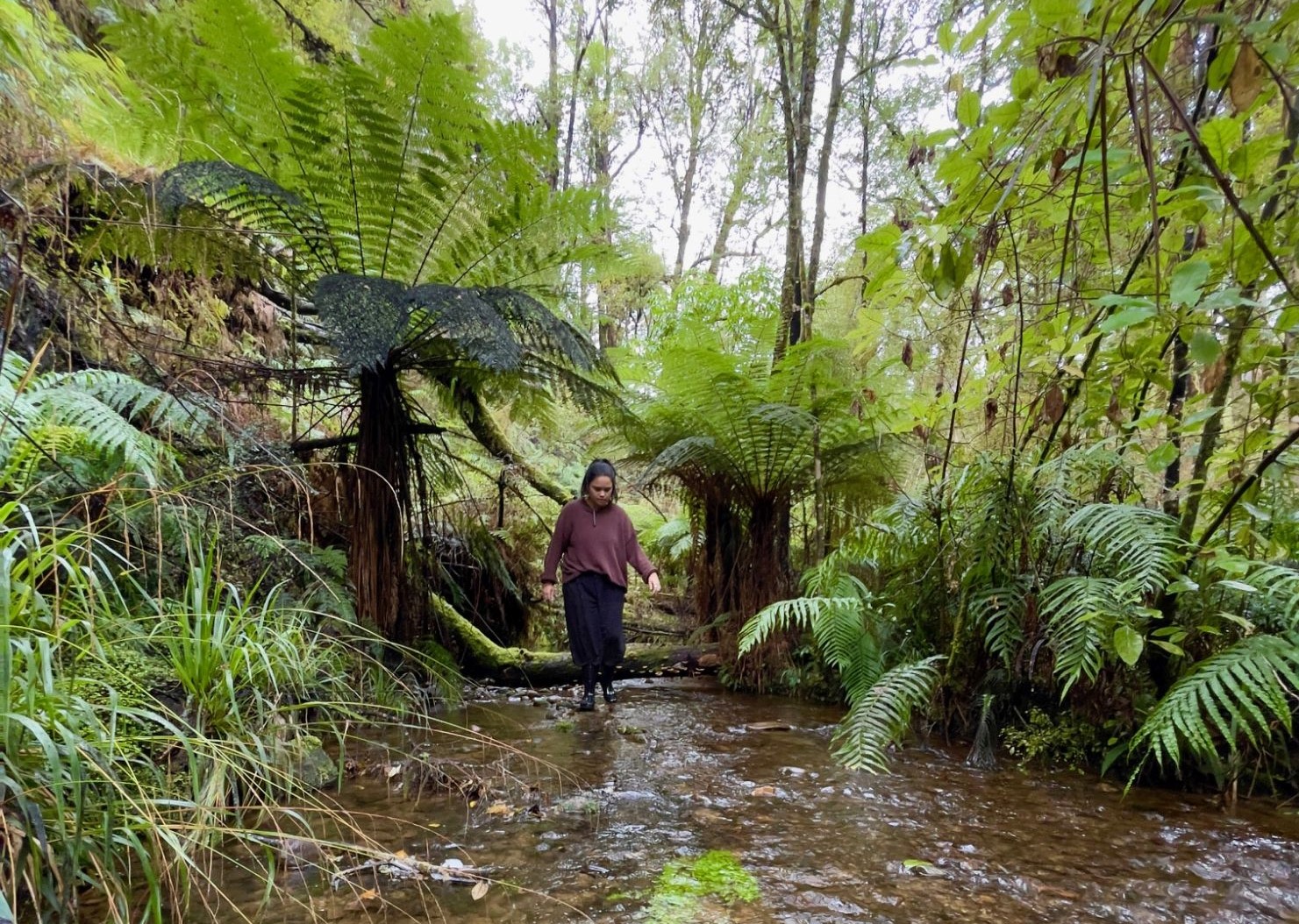 Amelia North enjoying the waters at Te Aka. Photo / Supplied
Amelia North enjoying the waters at Te Aka. Photo / Supplied
Amid the beauty of solitude and tinkling water of Golden Gully, this pocket of paradise spills with secrets of the grit and toil of 19th century goldmining– and their mesmerising engineering feats. At the time, ground sluicing was the main method of working the gold from trough-like hollows on the surface of the area’s sandstone. Sluicing needed a good supply of water which was directed over the working face, washing the gravels out. Large rocks were lifted aside and stacked as tailings, while the smaller material was washed down tailraces containing riffle boxes to 'save' the gold. Tailraces were also essential to remove excess water from the working area. At the height of the goldrush around Nelson Creek, there were over 1200 miners in these parts – many of whom were Chinese goldminers.
Throughout the regenerating beech forest, I marvelled over the tailraces, many of which were more like slot canyons, cleaved out of the sandstone terraces with pickaxes and laborious, back-breaking manpower. And all without the luxury of machinery to assist them. Others were like cathedral-sized caves, designed to divert the water away. Dave has dubbed one of them ‘The Instagram Cave.” It’s celestial. Some of them are so incredibly deep, narrow and smoothed out by the millions of litres of water that have passed through these narrow channels. Needless to say, torchlight comes in handy. I felt like I had been transported to Angkor Wat and some of the temple ruins reclaimed from the jungle, half expecting to cross paths with Lara Croft.
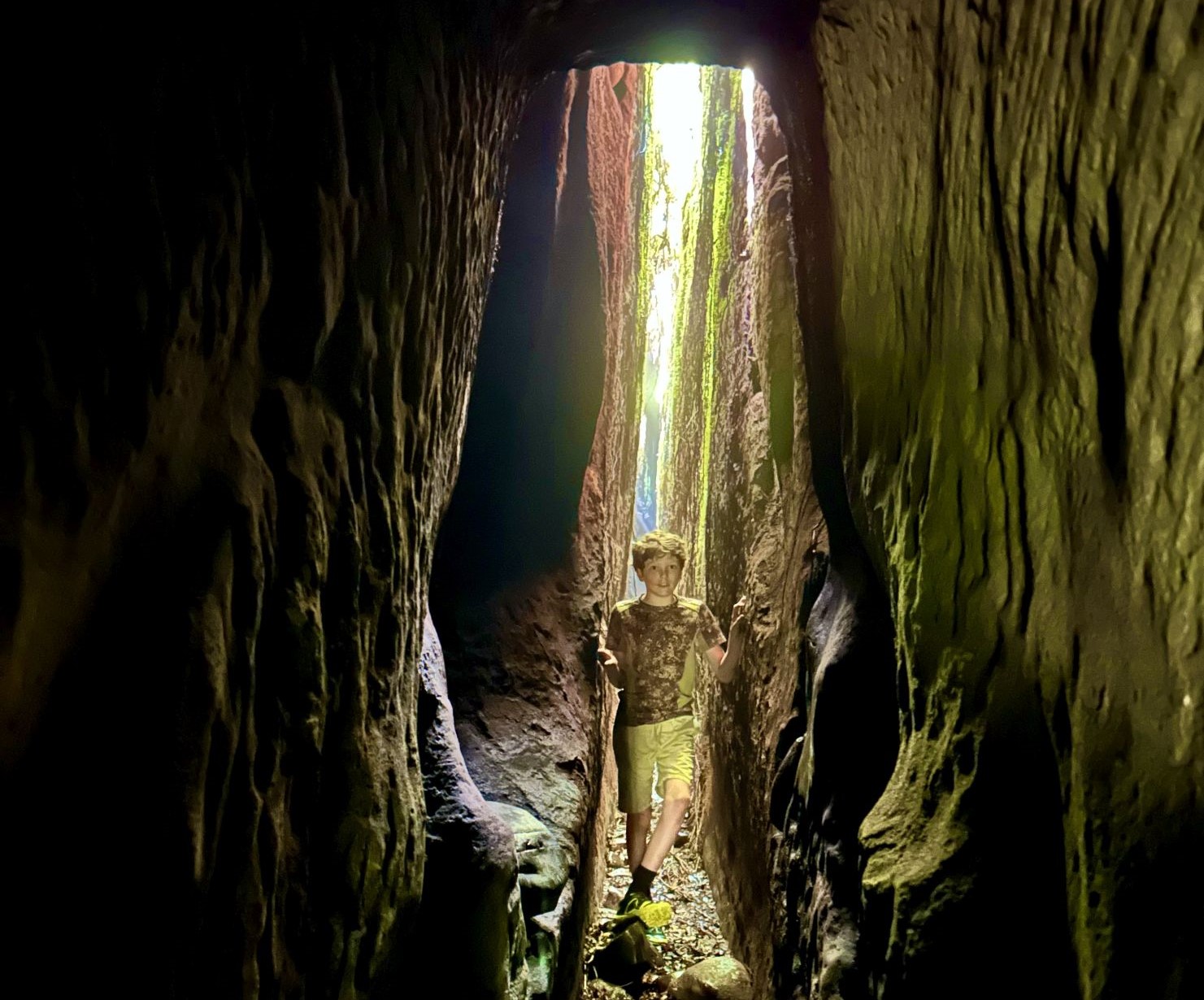 Tom North inside the Indiana Jones Cave. Photo / Supplied
Tom North inside the Indiana Jones Cave. Photo / Supplied
Interestingly, some of the remnants of the goldminers’ exploits have been given nicknames by the North children. Thomas bestowed the name, “Indiana Jones Cave” on one of the tunnels – and it’s so apt. It’s the perfect movie set for a Hollywood blockbuster. Trust me, the sheer scale and variety of tailrace tunnels here is jaw-dropping. And the fact that they are man-made through blood, sweat and tears is all the more extraordinary. It adds another layer of fascination to this eye-opening destination. Nestle yourself in the balm of nature’s embrace at Te Aka Treehouse Native Forest Retreat. It’s escapism in excelsis, engaging and stimulating all of your senses. www.te-akatreehouse.co.nz
Mike Yardley is our resident traveller on Jack Tame Saturday Mornings.
Take your Radio, Podcasts and Music with you









